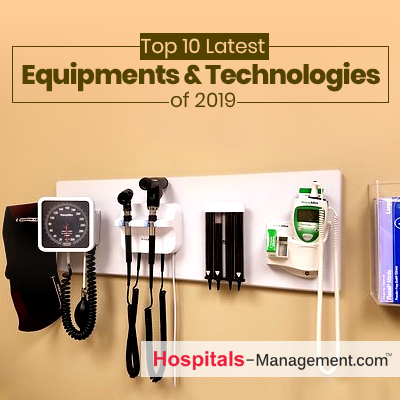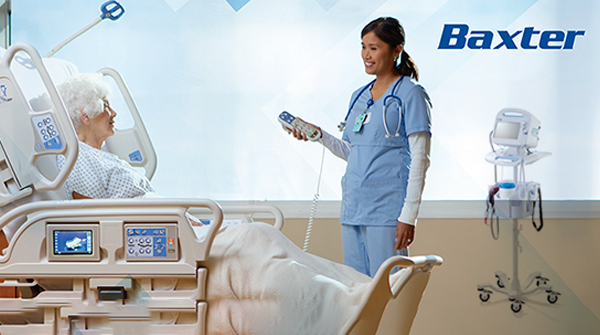Articles
Top 10 Latest Equipments & Technologies of 2019 | Healthcare Innovations

Healthcare industry is witnessing the most innovative technologies and effective equipments to diagnose and treat the ailments. It shows that there has been a tremendous scope of developing better and improved machines to bolster healthcare and medicine as a science.
Demand for healthcare equipments, latest technology is rising leading to the constant healthcare innovation.
According to a report, the healthcare IT market is projected to reach USD 390.7 billion by 2024 from USD 187.6 billion in 2019, at a CAGR of 15.8% during the forecast period.
Growth in this segment is attributed to the increasing demand for improved patient safety and patient care, stringent regulations regarding healthcare provider solutions.
Below are the top 10 latest equipments & technologies of 2019:
1) CRISPR
Clustered Regularly Interspaced Short Palindromic Repeats (CRISPR) is the most advanced gene-editing technology.
CRISPR-Cas9 technology is one of the most widely used methods for gene editing.
CRISPR can be programmed to cut DNA at specific regions to make precise edits in an organism that can increase sustainable manufacturing. It works by harnessing the natural mechanisms of the immune systems of bacterium cells of invading viruses, which is then able to ‘cut out’ infected DNA strands.
Modifying genes will help to overcome some of the biggest threats to our health like cancer, HIV etc in a matter of years.
2) Health Wearables
Health wearables have a huge demand as these wide variety of health apps, trackers are creating a impact providing insightful body data that can enhance medical care and predict the illness early.
These wearables are helping people to track everything from their steps, physical fitness and heartbeat, to their sleeping patterns. 'Wearable tech' has exploded across the globe, from smart watches, virtual reality headsets to fitness trackers and holistic health monitoring devices. These wearables will not only lead to quicker and more accurate diagnosis but might also preempt certain illness.
3) Telehealth
Telehealth allows the patients to receive medical care through their digital devices, instead of waiting for face-to-face appointments with doctor. For instance, some apps allow patients to speak virtually with their physicians and other related medical professionals to receive instant diagnosis and medical advice.
4) Virtual reality
Virtual reality devices will help patients with diagnosis, treatment plans to prepare them for procedures they are facing. Virtual reality healthcare devices have been proven in patient rehabilitation and recovery.
According to a report, the global Augmented reality and virtual reality in healthcare market size was USD 580 million and it is expected to reach USD 2160 million by the end of 2025, with a CAGR of 17.8% during 2019-2025.
5) Artificial organs
Artificial Organs are devices or tissues that are implanted into humans to replace natural organs to augment a specific function helping patients to resume a normal life. This emerging medical technology saves millions of patients as they are able to replace blood vessels, synthetic ovaries and even a pancreas.
These artificial organs help to improve the patient's ability for self care and prevent imminent death.
6) Precision medicine
Precision medicine allows doctors, medical professionals to select medicines and therapies to treat diseases such as cancer and so on. Furthermore, personalized medicines are better than other types of treatment as it attacks tumours based on the patient’s specific genes and proteins, causing gene mutations and making it more easily destroyed by the cancer meds.
Tools used in precision medicine can include molecular diagnostics, imaging, and analytics. Precision medicine can also be used to treat rheumatoid arthritis.
7) 3-D printing
3-D printers are popularly known to create implants and even joints to be used during surgery. 3-D printed prosthetics are known for their digital functionalities that enable them to match an individual's measurements down to the millimeter. It is used to print bills that contain multiple drugs and also to monitor multiple medications.
8) Wireless brain sensors
Wireless brain sensors are gadgets that provide assistance in identifying the intracranial weight, control the temperature and record cerebrum motioning as cerebrum waves.
Wireless brain sensors help physicians to create bioresorbable electronics that can be placed in the brain and dissolve when they are not required. Temperature and pressure within the brain can be monitored using these wireless brain sensors.
The sensors consist of polylactic-co-glycolic acid (PLGA) and silicone, and are capable of transmitting accurate pressure and temperature readings, as well as other information.
According to a report, the wireless brain sensors market is expected to witness growth over the forecast period.
9) Robotic surgery
Robotic surgery helps in precision, control and flexibility in simply persistent procedures. Complex procedures can be performed with the robotic surgery. Augmented reality is combined to allow surgeons to view important additional information about the patient in real time while still operating.
10) Smart inhalers
Smart inhalers are bluetooth-enabled smart inhalers that record the date and time of each dose and whether it was correctly administered. These smart inhalers are used for asthma patients and if taken correctly, they are effective for 90% of patients.
These smart devices can raise reminders and alerts for users based on previous pattern of dosage administration or based on inputs fed by users.



